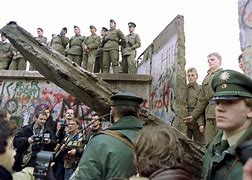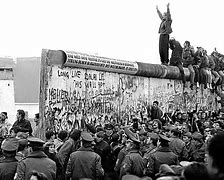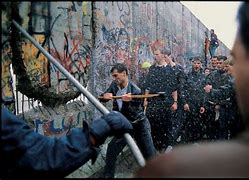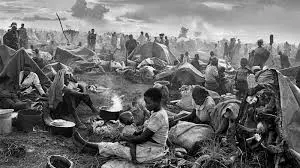The Fall of the Berlin Wall: The End of the Cold War
The fall of the Berlin Wall in 1989 marked a pivotal moment in history, symbolizing the end of the Cold War and the collapse of the Iron Curtain. For nearly three decades, this imposing concrete barrier divided not just the city of Berlin but the very heart of Europe, representing the ideological, political, and military rift between the communist East and capitalist West. The events that led to the fall of the Berlin Wall were not just a result of a single moment of political upheaval but were part of a broader wave of change sweeping through Eastern Europe and the Soviet Union.
Understanding the fall of the Berlin Wall requires delving into the historical context, the key players, and the series of events that set the stage for such a dramatic transformation. In this article, we’ll explore the significance of the Berlin Wall, the factors that contributed to its eventual downfall, and how its fall signaled the end of the Cold War, forever altering the global political landscape.

What Was the Berlin Wall?
The Birth of the Berlin Wall
The Berlin Wall, erected in 1961, was the physical manifestation of the division between East and West Germany, symbolizing the larger ideological division between the Soviet Union and the Western democracies during the Cold War. It was originally built by the German Democratic Republic (East Germany) to prevent the mass exodus of East Germans to West Berlin, which was seen as a threat to the communist regime. The Wall physically separated families, friends, and even entire communities, making it one of the most infamous symbols of the Cold War.
For 28 years, the Berlin Wall stood as a barrier to freedom, with the Western side of Berlin representing capitalist democracy and the Eastern side under the control of the Soviet-backed socialist regime. Its existence highlighted the global standoff between the United States and the Soviet Union, with Berlin at the heart of the East-West confrontation.
The Impact of the Berlin Wall
The Berlin Wall wasn’t just a physical structure but a symbol of the larger geopolitical struggle between the communist East and the capitalist West. It represented the division of Germany after World War II and the division of Europe following the war. It became a daily reminder of the ideological divide, and as such, it shaped not only the lives of the German people but also the policies of the global superpowers.
For the people living in East Berlin, the Wall was a constant reminder of their isolation from the outside world and the restrictions placed upon them by their government. The Berlin Wall became the focal point of East-West tensions, and its existence had global consequences, as it played a central role in the broader Cold War rivalry.

The Cold War Context
A World Divided
The Cold War, which lasted from the end of World War II until the early 1990s, was a period of intense political and military rivalry between the Soviet Union and the United States, along with their respective allies. The conflict was characterized by ideological differences, with the Soviet Union promoting communism and the United States advocating for capitalism and democracy. These competing ideologies led to the creation of two distinct blocs: the Eastern Bloc, controlled by the Soviet Union, and the Western Bloc, led by the United States and its NATO allies.
The Berlin Wall stood as the physical boundary between these two worlds. Its existence embodied the global tensions of the Cold War, as each side sought to expand its influence and prevent the other from gaining ground. Berlin, divided into East and West, became a symbol of the ideological and political divisions that characterized this tense period of history.
The Arms Race and Proxy Wars
Throughout the Cold War, both the United States and the Soviet Union engaged in an arms race, amassing vast quantities of nuclear weapons and military hardware. Although direct military conflict between the two superpowers was avoided, the world was frequently on the brink of war, as tensions escalated in various regions through proxy wars.
In addition to the arms race, both sides engaged in covert operations, espionage, and ideological warfare, each seeking to undermine the other. These efforts played out in different parts of the world, from Korea to Vietnam, from Cuba to Afghanistan. The Berlin Wall became the focal point of this broader global struggle, with the city of Berlin representing the larger battle for ideological supremacy.
The Seeds of Change in Eastern Europe
The Gorbachev Era
By the 1980s, the Cold War was entering its final phase. The Soviet Union, under the leadership of Mikhail Gorbachev, began to shift its policies in response to both internal and external pressures. Gorbachev’s reforms, including glasnost (openness) and perestroika (restructuring), were designed to address the stagnation and inefficiency of the Soviet system.
These reforms had far-reaching consequences, not just for the Soviet Union but for the entire Eastern Bloc. In Eastern Europe, communist regimes began to weaken, as citizens demanded greater political freedoms and economic reforms. The Soviet Union, under Gorbachev, adopted a policy of non-intervention in the affairs of Eastern Europe, signaling a departure from the traditional approach of using military force to maintain control over the region.

The Role of Eastern European Dissidents
In the years leading up to the fall of the Berlin Wall, dissident movements across Eastern Europe were gaining strength. Countries like Poland, Hungary, and Czechoslovakia saw growing protests and demands for greater freedoms. Solidarity, the trade union movement in Poland, led by Lech Wałęsa, was a key example of how grassroots movements were challenging the Soviet-backed regimes. The influence of these uprisings, along with Gorbachev’s reforms, ignited a sense of hope for the citizens of East Germany.
The Fall of the Berlin Wall
The Spark: A Press Conference in 1989
The actual fall of the Berlin Wall came unexpectedly, as a result of a miscommunication during a press conference in November 1989. However, the announcement was not clear, and it led many to believe that the border was open immediately. Thousands of East Berliners rushed to the Wall, demanding to be allowed to cross into West Berlin.
In an attempt to control the situation, border guards, who were unprepared for the mass of people, opened the gates, allowing East Germans to freely cross into West Berlin. This spontaneous event marked the symbolic end of the Wall and the beginning of the reunification of Germany.
The Destruction of the Wall
Once the gates were opened, East and West Berliners celebrated together, and many began to physically demolish the Wall. The fall of the Berlin Wall was not just an emotional event but a profound political one. It represented the collapse of the East German regime and the unraveling of the broader Soviet sphere of influence in Eastern Europe.
The dismantling of the Wall, as well as the reunification of East and West Germany, symbolized the end of the Cold War. It also marked the beginning of the transformation of Europe, with former communist countries moving toward democracy and market economies.
The Global Repercussions
The End of the Cold War
The fall of the Berlin Wall effectively marked the end of the Cold War. With the collapse of communism in Eastern Europe, the Soviet Union lost its grip on the region, and the ideological struggle between the United States and the Soviet Union came to an end. The subsequent dissolution of the Soviet Union in 1991 sealed the fate of the Cold War.
The fall of the Wall also had profound consequences for global politics. The United States emerged as the world’s sole superpower, and the expansion of democracy and capitalism became a global trend. The end of the Cold War led to a new era of international relations, characterized by greater cooperation and the spread of democratic values.
The Reunification of Germany
The fall of the Berlin Wall led directly to the reunification of Germany in 1990. After nearly 45 years of division, the two halves of Germany were reunified, and Berlin became the capital of a unified, democratic country. This reunification was not without challenges, as the East German economy needed significant restructuring and integration with the more advanced West German economy.
The process of reunification also had social and political implications, as the citizens of East and West Germany had lived under different systems for decades. However, over time, Germany emerged as one of Europe’s leading political and economic powers.
Conclusion: The Legacy of the Berlin Wall
The fall of the Berlin Wall was a monumental event in world history. It signaled the end of the Cold War, the collapse of communist regimes in Eastern Europe, and the reunification of Germany. More than just a physical structure, the Berlin Wall came to symbolize the division of the world during the Cold War and the triumph of freedom and democracy over authoritarianism.
FAQs
1. What happened immediately after the Berlin Wall fell?
After the Wall fell, East and West Berliners celebrated together, and border guards opened the gates, allowing East Germans to freely cross into West Berlin.
2. How did the fall of the Berlin Wall impact Germany?
The fall of the Berlin Wall led to the reunification of Germany in 1990, ending decades of division and marking a major step toward the integration of Eastern Europe into the Western democratic fold.
3. What was the significance of the Berlin Wall in the Cold War?
The Berlin Wall was the physical and ideological symbol of the division between the communist East and capitalist West during the Cold War. Its fall marked the end of the Cold War and the collapse of the Soviet Union’s influence in Eastern Europe.

